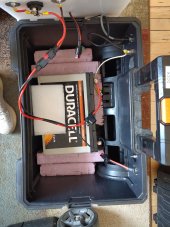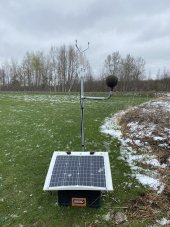Hello,
I work for an acoustics consultant firm, specializing in environmental (outdoor) noise. We are based in Wisconsin so it can get cold. Our current setups consist of a RIGID plastic toolbox with an AGM battery to power our equipment (sound level meter, sound recorder, ultrasonic anemometer and cellular router). We have a 50w flexible solar panel mounted on a board mounted on top. We leave these units out in the field for a few months. Sometimes they die, particularly in colder weather. We are looking to improve that.
My current plan was:
Upgrade to lithium batteries with built in heater (such as the renolgy option)
Put insulation around the inside of our boxes
Upgrade solar panels to 100w
Any thoughts on my plan or potential improvements?
Here are some pics of the setup



I work for an acoustics consultant firm, specializing in environmental (outdoor) noise. We are based in Wisconsin so it can get cold. Our current setups consist of a RIGID plastic toolbox with an AGM battery to power our equipment (sound level meter, sound recorder, ultrasonic anemometer and cellular router). We have a 50w flexible solar panel mounted on a board mounted on top. We leave these units out in the field for a few months. Sometimes they die, particularly in colder weather. We are looking to improve that.
My current plan was:
Upgrade to lithium batteries with built in heater (such as the renolgy option)
Put insulation around the inside of our boxes
Upgrade solar panels to 100w
Any thoughts on my plan or potential improvements?
Here are some pics of the setup








